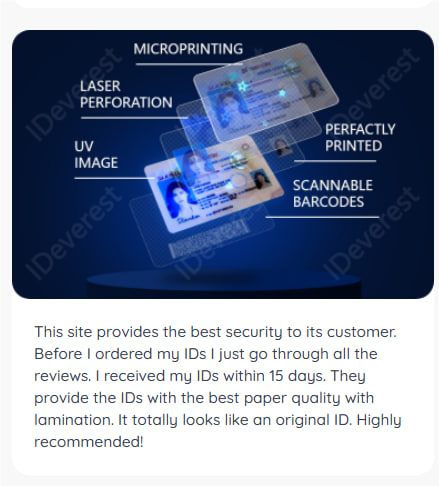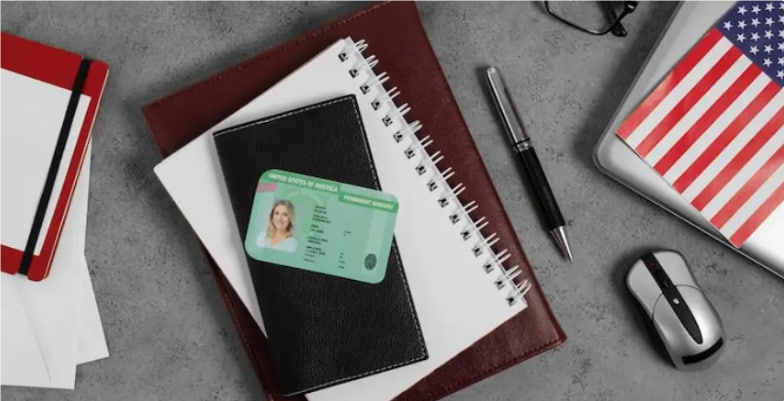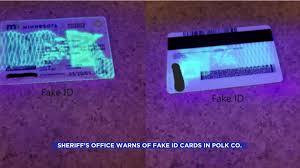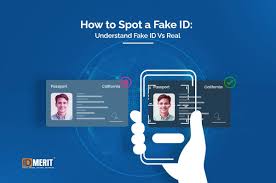How to Spot a Fake Connecticut ID
How to Spot a Fake Connecticut ID
Fake Connecticut IDs are becoming increasingly common, bringing legal issues and security concerns.
You need to know how to spot these fakes to avoid possible problems.
Imagine being given a fake ID without knowing it. This could lead to fines, legal issues, and underage drinking.
It’s stressful and risky for everyone involved.
But things are different now…
In today’s fake Connecticut ID spotting guide, you’ll learn how to spot a fake ID by identifying important features like holograms, transparent fonts, and UV images.
With this knowledge, you’ll be able to avoid breaking the law and stay out of trouble.
Let’s get started!
Tips for Spotting a Fake ID
Here are some great Connecticut ID spotting tips:
Feel the Texture – A real Connecticut ID has a smooth, slightly glossy finish. If the ID feels rough, flimsy, or overly thick, it’s probably a fake.
Check the Edges – Genuine IDs should have neat, even edges. If you notice jagged or irregular edges, it could be a sign that the ID is a fake.
Check the font and text – Make sure the font is clear and consistent. A real ID will not have typos or inconsistent font styles. Blurred or faded text should be a cause for concern.
Verify the information – Confirm that all the information on the ID is accurate. Check the personal details to see if there are any discrepancies, such as inconsistent dates or wrong addresses.
Check the photo – The photo should be high quality and clearly consistent with the person presenting the ID. Blurred or pixelated photos are often a sign that the ID may be fake.
By taking these steps, you can better identify fake Connecticut IDs and avoid possible legal issues.
Check out: List of the 7 states with the best fake IDs in 2024.
Features of Connecticut IDs include: high quality, unique design, personal information and photos, and anti-counterfeiting technology to ensure security and prevent counterfeiting. In addition, the ID has a machine-readable barcode for quick scanning and verification.
When you are looking for a Connecticut ID, you need to look for the following:
Hologram
A real Connecticut ID has a sophisticated multi-color hologram that changes in light when tilted. These holograms are intricately designed with layers of detail that are difficult to replicate. When the ID is in motion, the hologram will appear to dynamically change color and pattern.
If the holograms appear dim, static, or absent, the ID may be fake. Examining these holograms is the first step to identifying a fake Connecticut ID.
Fonts and Text
The font on a genuine Connecticut ID should be clear, distinct, and consistent. Genuine IDs use a specific font that is consistent in style and spacing. When examining the ID, look for blurred or faded text and inconsistencies in font style or size.
Spelling errors and grammatical problems are common signs of counterfeit IDs. A genuine Connecticut ID should have clear, accurate text with no noticeable flaws. Ensuring the accuracy and consistency of the text can help identify a fake ID.
Photo Quality
The photo on a genuine Connecticut ID should be high quality and clearly match the person wearing the ID. Genuine IDs use a high-resolution image that clearly and accurately reflects the cardholder.
If the photo appears blurry, pixelated, or looks like it has been altered or replaced, this is often a sign of a counterfeit ID. The photo needs to be perfectly aligned with the ID frame and should not show any signs of tampering. Comparing the photo to the person presenting the ID is important in identifying a fake ID.
UV Imaging
Genuine Connecticut IDs feature unique UV markings that are invisible to the naked eye but clearly visible under UV light. These UV features are designed specifically for added security and are difficult for counterfeiters to replicate.
To check for these markings, use a UV light to see if there are any hidden patterns or text in the ID that should glow under UV light. If the UV pattern is missing or inaccurate, the ID may be a counterfeit. This method is an effective way to verify the authenticity of an ID.
Laser Perforations and Embossing
Genuine Connecticut IDs feature laser perforations in a specific shape or pattern, as well as laser embossed text. These features are created using advanced technology to make them very difficult to counterfeit.
Laser perforations are where small holes are punched into an image or design, while laser embossing is where elements of the text or image are slightly raised above the surface. When inspecting an ID, pay attention to these fine details.
The absence of laser perforations or embossing, or the improper treatment of these features, usually means the ID is counterfeit.
Laminate Quality
The laminate used on an authentic Connecticut ID card should be professional grade, smooth, and should not show bubbles when bent. This quality laminate will effectively protect the ID card from wear and tear and tampering.
To test the laminate, gently bend it into a "U" shape. If the laminate is good quality, it will remain smooth and intact. Poor quality laminate that easily bubbles, peels, or cracks is a sign of a counterfeit product.
Ensuring the quality of the laminate can help verify the authenticity of the ID and identify counterfeits.
See: What Differs from a Fake ID Card.
Advanced Verification Techniques for Identifying Connecticut ID Cards
Here are some advanced tips and verification methods for detecting counterfeit Connecticut ID cards.
Barcode Scanning
Scanning the barcode on a Connecticut ID card is an important step in verifying its authenticity. A real ID card will have a barcode with information that matches the details on the front of the card.
Use a reliable ID scanner to read the barcode. Make sure the information you scan matches the data printed on the ID card, such as name, date of birth, and address.
If the barcode fails to scan or the data doesn't match, it could mean the ID is fake. This method is effective because signs of forgery can be spotted quickly.
Behavioral cues
Observing the behavior of the person presenting the ID can provide additional clues to its authenticity. Nervousness and inconsistent responses could indicate deception.
Also, pay attention to the cardholder's behavior. Signs of nervousness, such as constantly moving around, avoiding eye contact, or sweating, could mean they are using a fake ID. Also, ask simple questions related to the information on the ID.
Inconsistent or hesitant responses could further reinforce the suspicion of a fake. This method is effective because it adds a layer of human assessment to the verification process.
Also check out: Top 10 Movies with Fake IDs: Classic Scenes and Actors.
Common Types of Fake IDs
Here are a few common types of fake IDs:
Borrowed IDs
A borrowed ID is a real ID that someone else lets you use. While these IDs themselves are not fake, they are still illegal for the holder to use.
The main problem with borrowed IDs is that the photo or physical features on the ID do not match the actual holder.
If the person does not look like the photo on the ID or there are other inconsistencies, these differences can be very noticeable. Checking for these differences can help determine if the ID is borrowed.
Forged IDs
A fake ID is completely fictitious and looks like a real ID. These fakes can have a variety of problems, including design flaws on the front and back, such as irregular fonts, uneven colors, or misplaced holograms.
The barcodes on fake IDs often do not scan accurately or give the wrong information. The level of skill in counterfeiting varies, and while some forgeries are easy to spot, others are very deceptive. Looking closely at these details can help identify a fake ID.
Altered IDs
An altered ID is a real ID that has been modified to update specific information, such as date of birth or address.
These modifications are usually intended to affect the person using the ID. These changes may affect the security features of the ID, such as holograms or microtext, making it easier to identify.
Common modifications may include removing or adding information. Identifying these modifications requires checking the ID's details and security features for inconsistencies.
See also: How to Spot a Fake ID With a Flashlight.
Authentic Fake ID Vendors
When discussing IDs, it is important to understand the difference between legitimate ID providers and those that make fake IDs. Legitimate ID providers are licensed and regulated by the relevant authorities and are legally able to issue IDs. They follow strict security protocols to ensure the authenticity and security of their IDs.
Identifying Trusted Vendors
For those who seek quality and security, some providers are recognized for their attention to detail. For example, ideverest.com has been praised for its high standards in producing ID cards. These providers are known for their commitment to quality and customer service, which has built a good reputation in their field.




Avoid Buying from Counterfeit ID Vendors.
Be cautious of services that claim to be able to provide "authentic fake IDs." Such services are often illegal and may use inferior materials and poor security methods. When choosing a service provider, it is important to verify their legitimacy to avoid getting into legal trouble or falling prey to fraud.
Report suspicious vendors.
If you come across any service provider that looks suspicious or unusually good, report it to the authorities. This will help curb the spread of illegal ID cards and protect others from possible legal risks.
This section has positively profiled widely recognized service providers and stressed the importance of distinguishing them from those involved in illegal activities.
Conclusion
Identifying a fake Connecticut ID card may seem complicated, but it is much easier with the right approach. Focus on key features such as the hologram, font, UV marking, and the quality of the laminate. These details are very important when distinguishing authenticity from fraud.
While some service providers like ideverest.com are known for their high standards, always be vigilant and cautious. If you notice any suspicious activity, report it immediately. Your vigilance will not only help you avoid trouble, but also keep others safe.
With these tips, you can face the challenge of verifying your identity with confidence, ensuring that you are dealing with a legitimate transaction.



 How to Spot a Fake ID – Ultima
How to Spot a Fake ID – Ultima
 Legal Consequences of Using a
Legal Consequences of Using a
 Missouri Fake ID
Missouri Fake ID
 fake Connecticut ID
fake Connecticut ID